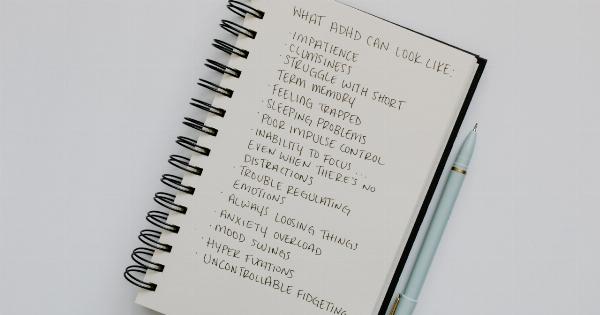OCD, which stands for Obsessive-Compulsive Disorder, is a mental health condition that affects millions of people worldwide.
It is characterized by recurring and intrusive thoughts (obsessions) that lead to repetitive behaviors or mental acts (compulsions). While OCD can manifest in various ways, it is often categorized into different types and subtypes based on the nature of the obsessive thoughts and compulsive behaviors.
1. Contamination OCD
Contamination OCD is one of the most common subtypes of OCD. Individuals with this subtype experience an intense fear of contamination or dirt.
They often engage in excessive washing, cleaning, or avoidance behaviors to reduce their anxiety related to contamination.
2. Symmetry OCD
Symmetry OCD revolves around the need for perfect symmetry or orderliness. People with this subtype may feel a strong urge to arrange objects in a specific way or perform repetitive actions to achieve a sense of balance.
They may become anxious or distressed if things are not arranged symmetrically.
3. Forbidden Thoughts OCD
Forbidden Thoughts OCD, also known as intrusive thoughts OCD, involves obsessive thoughts related to taboo or forbidden subjects. These thoughts can be violent, sexual, or aggressive in nature and are often distressing to individuals experiencing them.
They may engage in mental rituals or avoidance behaviors to cope with the discomfort caused by these thoughts.
4. Hoarding OCD
Hoarding OCD is characterized by persistent difficulty in getting rid of possessions. People with this subtype have a strong attachment to objects and struggle with discarding even those things that are no longer useful or of value.
Their living spaces often become cluttered and may interfere with daily functioning.
5. Checking OCD
Checking OCD is associated with excessive checking behaviors. Individuals with this subtype have an irrational fear of harm or damage occurring due to their negligence.
They may compulsively check locks, appliances, or other items to ensure they are secure or safe, even when there is no real threat present.
6. Orderliness OCD
Orderliness OCD is characterized by a need for order and perfection. Individuals with this subtype have an overwhelming desire to arrange things in a specific manner.
They may spend excessive amounts of time organizing items or become distressed if things are not done in a particular sequence or according to a set pattern.
7. Hoarding OCD
Hoarding OCD is characterized by persistent difficulty in getting rid of possessions. People with this subtype have a strong attachment to objects and struggle with discarding even those things that are no longer useful or of value.
Their living spaces often become cluttered and may interfere with daily functioning.
8. Pure Obsessional OCD
Pure Obsessional OCD, also known as Pure-O OCD, is a unique subtype where individuals experience distressing and intrusive thoughts without engaging in external compulsive behaviors.
These obsessive thoughts can be related to doubts, fears, or unwanted mental images. Internal rituals, such as mental counting or repeating phrases, may take place instead of visible compulsions.
9. Sensory OCD
Sensory OCD involves obsessive thoughts related to sensory experiences, like tactile sensations or bodily sensations. People with this subtype may be overly sensitive to specific textures, odors, or environmental conditions.
They may engage in rituals or avoidance behaviors to alleviate their discomfort or anxiety associated with certain sensory triggers.
10. Relationship OCD
Relationship OCD, also known as ROCD, is centered around obsessions and compulsions related to romantic or interpersonal relationships.
Individuals with this subtype may constantly doubt their feelings for their partner, worry excessively about the quality of their relationship, or seek reassurance repeatedly. They may engage in checking behaviors or mental rituals to ease their anxiety and uncertainty.
It’s important to note that these are just a few examples of OCD subtypes, and individuals may experience a combination of different types or characteristics from multiple subtypes.
Seeking professional help from a mental health practitioner is crucial for accurate diagnosis and appropriate treatment.

























